![]()
On a bitterly cold morning on the 27th January 1937, police officers had been alerted to an incident that had taken place high upon the bleak moorland that overlooked the town of Burnley in the North West of England.
Quickly making their way to the scene, upon arrival they would be horrified at what they encountered as lying outside on the ground was the body of 73 year old William Pickup. Roughly five yards away lay the body of 18 year old Jane Ellen Wilkinson. Both had been shot, suffering horrific injuries to their bodies.
But this wasn’t to be the end as, not too far away, the body of 30 year old, Joseph Scriven would shortly be discovered lying in a shippon close to the farm house. He too had been shot.
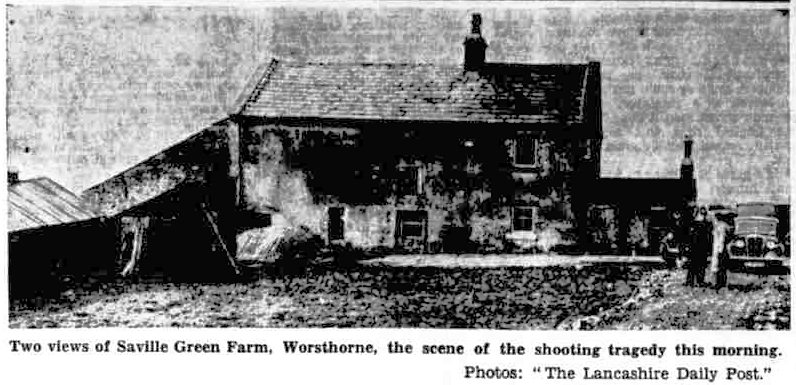
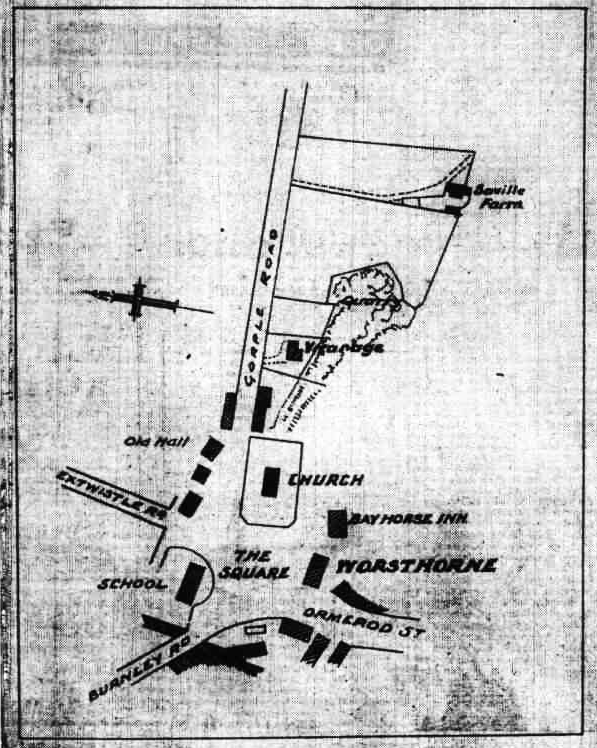
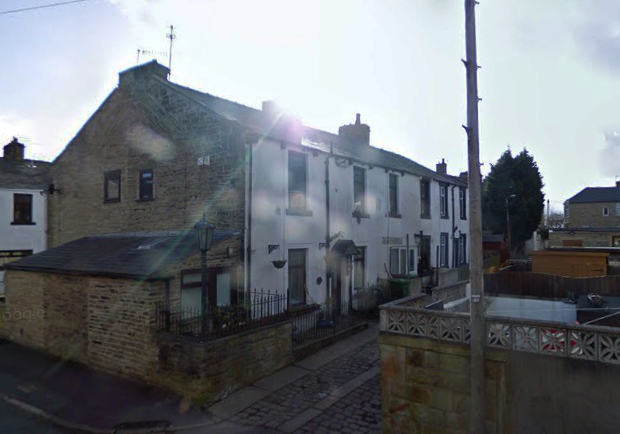
Heap Street
The events that took place that morning would shock not only the residents of Worsthorne but that of entire county, and with it placing the village under a dark haze for many, many years. Locals would ask how could a tragedy as shocking as this possibly occur on their very own doorsteps.
Foulds Wilkinson was a farmer living at Saville Green Farm that was situated high up on the moors in the village of Worsthorne. A widower since 1929 after the death of his wife Martha, Fould’s shared his farm with his daughter, Jane Ellen as well as his father-in-law, William Pickup.
On the morning of Wednesday, 27th January 1937, he had left home at around half past eight to deliver milk to a local firm in nearby Burnley.
He had left his daughter, Jane, to help with chores around the farm, along with her grandfather, William. Both were consumed by the work and seemed in good spirits as they carried out their usual duties around the farm. Inside the shippon, recently hired farm labourer, Joseph Scriven was also busy working hard.
Foulds would be gone for around an hour, returning back at the farm at around half past nine.
Passing down a long, but straight lane that exited off from Gorple Road, nothing could have prepared him from what he was about to encounter as, after parking up his van in the yard and making his exit, his attention was quickly diverted to seeing the body of a man lying on the ground. Not sure what to think, as he made his way over to where the body was lying, he soon came across another shocking discovery – the body of his young daughter was also lying on the ground, around five yards from where the body of William Pickup was laying.
Without wanting to investigate further, he immediately jumped back into his van and drove to the Burnley Police station.
As he was hurriedly making his way to seek help, a man by the name of Frederick Brown, a ‘paperhanger’ or what is today commonly known as a painter and decorator, was already making his way to the farm to do some interior decorating. He had visited Saville Green Farm only the previous evening to speak to the family, and together they had selected which wallpapers they liked the best.
It was Frederick’s intention to have started work at the Saville Farm by nine o’clock that morning, but he had been delayed and wouldn’t arrive until shortly before ten o’clock.
Taking a shortcut over some fields, he climbed a wall that skirted around the farmyard and he too would be shocked at the scenes that Fould’s Wilkinson himself had witnessed only a few prior minutes before.
He saw Jane Wilkinson first, and thinking she had maybe slipped on the icy-bound ground and done herself some serious injury, he went over to pick her up. It was then he saw the body of the old man, William Pickup.
Now realising something was terribly wrong, Frederick rushed inside the farmhouse to raise an alarm. Upon entering the back kitchen, he came across another body – that of 20 year old, JOHN JAMES BLACKBURN.
Lying on the ground, Blackburn had awful injuries to his head and next to his hand was a double-barreled shotgun.
Obviously now in a distressed state of mind, Frederick fled from the farmhouse and immediately raced back to the village where he would telephone the police.
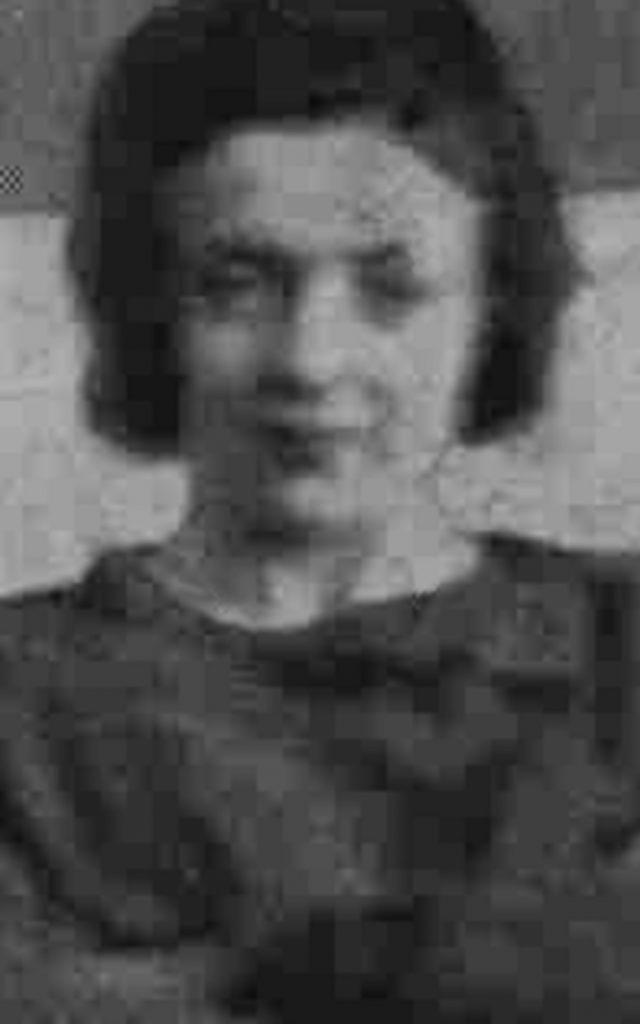
Jane Ellen Wilkinson 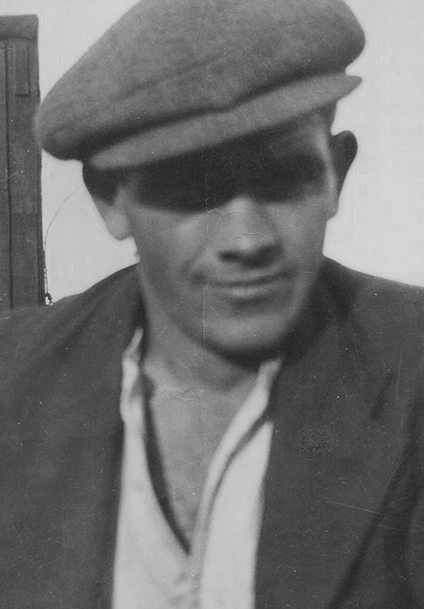
Joseph Scriven 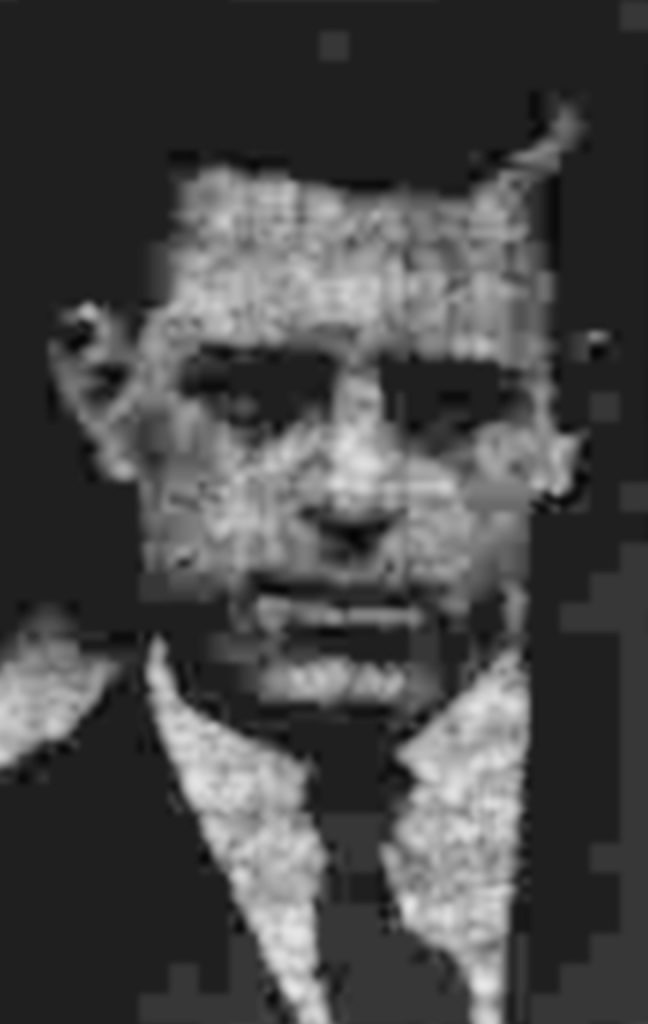
John James Blackburn 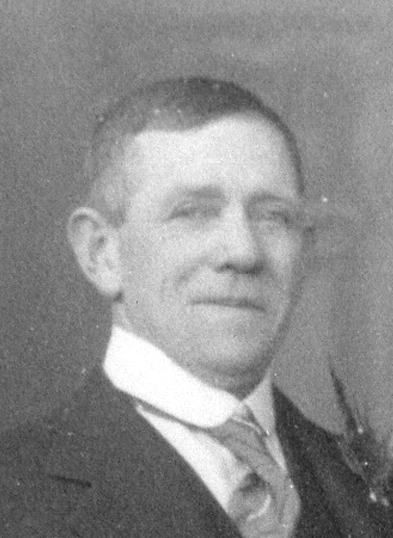
Foulds Wilkinson 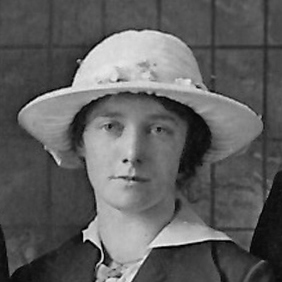
Margaret Mitton
Meanwhile, Fould’s Wilkinson was now making his way back to the farm, this time accompanied by Detective-Inspector Fenton, Superintendent Edwards, Inspector Blackledge as well as several Burnley police officers.
They would arrive back at the farm at around half-past ten and shortly afterwards, a fourth body would be discovered lying on the floor of the shippon close by to the farmhouse – that of thirty year old, Joseph Henry Scriven.
The police were quick to relay what they had found to the local police station and Patrol Constable Kinder, Detective-Sergeant Lloyd would soon arrive at the farm.
Upon their arrival, they soon cordoned off the entire area so everything could be documented, and by 11.30am, Mr. Duncan, a finger-print expert and the official photographer, had arrived from the County Police headquarters to do just that.
The scene was truly disturbing to all those present and was one of an unprecedented nature in this region of the North West.
Jane Ellen Wilkinson was lying by the side of a mixing trough. There was a wound on her face, and wounds were also seen on her left hand, indicating that she had held up her hand to try and protect herself.
William Pickup was lying dead in the center of the yard, the top of his head literally being none-existent.
Joseph Scriven, was the last to be found in the shippon; he was lying on his back and who had also died from a wound on the top of his head, as well as having been shot twice.
As for John Blackburn, he was found in the kitchen; the top of his head also having been blown away. A double-barreled shot gun as we have already mentioned was by his side.
Both Detective-Sergeant Lloyd and Chief Detective Inspector Fenton began to investigate the farm, looking for clues as to how the tragedy had unfolded and by whom and in doing so it didn’t take long for them to find their answer.
On a window-sill outside the back door of the farmhouse, a blood stained note written in pencil had been placed underneath a matchbox.
“Well, Foulds, I thought this would punish you more than anything else. I am not crazy, but just getting my own back. I leave you to look after my brother. J J B.”
Note written by John James Blackburn, 1937
The writing would later be confirmed to be that of John James Blackburn.
Examining Blackburn’s body further, they found spent gun cartridges inside one of his jacket pockets.
The bodies of all the victims, plus that of John Blackburn would later be wrapped in sheets and gently placed into the waiting ambulances before being taken to the mortuary in Padiham.
Whilst further examinations of the farmhouse and its surrounding building had, quite rightly, had to be undertaken, it was becoming clearly obvious to the investigators who the murderer was, but the question now was, why?
The inquest into the murders at Saville Green Farm took place on Friday, 29th January over in nearby Padiham with Mr. Frank Rowland, Coroner, describing the tragedy as a “veritable holocaust!”
Fould’s Wilkinson would be one of the first witnesses to take to the stand, confirming the dead to be those of his daughter, Jane Ellen Wilkinson, William Pickup, his father-in-law, Joseph Scriven, farm labourer and that of John James Blackburn.
After detailing the events leading up to the discover of the bodies on his farmyard, he would tell the jury of how he had employed Blackburn only seven weeks prior to the shootings and how he had dismissed him from his duties only three weeks prior due to arriving late for work and being impudent.
Fould’s would also tell of how Blackburn had, on Saturday, 23rd January, the weekend prior to the shootings, had come up to the farm at around 11.30pm, knocking loudly on the door and shouting for Fould’s to ‘come down.’
Jane Wilkinson had opened the door, telling Blackburn that her father was in bed.
“I got up and came downstairs, ” said Foulds, “and looked through the window and saw Blackburn there.”
Blackburn asked Fould’s; “Is our Harry here” – meaning his brother. Fould’s replied back to him; “He had gone home with Scriven.”
There was no trouble and Blackburn then left the farm.
The corner then asked; “Has Blackburn ever threatened to do you or your family any harm?” to which Fould’s replied; “No.”
Next to speak would be that of Sarah Ann Blackburn – mother to John.
She would identify the writing on the note found on the window-sill to be that of her sons. She would also tell the jury that her son had been unemployed for around three weeks.
On the night he had been dismissed, he had said to her that he was “fed up” and put his head in his hands and became silent.
He would tell her that he was not going back to the farm and that when he wanted any job he would get one. He did not seem to bear any grudge about anything which had happened at the farm.
Sarah would talk about his health, saying he had some teeth extracted some time ago and had often complained of pains inside his head to which the coroner seemed to jump on, asking her; “You don’t suggest that your son was not of sound mind?”
“I could not say exactly if anyone was or not. Perhaps we all think we are, but we may not be.” would be Sarah’s reply.
Inspector Blackledge would go into some detail as to how the police think the events had unfolded on the morning of the shootings saying it was possible that Scriven was the first to be shot in the shippon, having been shot in the back and then in the neck. The sound of the gun being fired had then attracted the attentions of William and Jane.
Blackledge then went on to say that it might have been “the old man” who was killed next as he could not get out of the way as nimbly as “the girl.”
She had been found by the trough as though she had been trying to escape through the piggeries, and injuries to her left hand suggested that she had made an ineffectual attempt to shield her face.
The coroner, speaking on how calm and collected Blackburn was on the morning of the shootings would then say; “Apparently, Blackburn had been a cool customer because it is a fair inference to say he had written the note in the yard and place in on the window. He must have been very cool because he anticipated the possibility of the wind blowing if away. He put a box of matches on top of it.”
Referring to the mentality of Blackburn, the coroner said the note meant that he deliberately purchased a gun and went to the farm to punish Wilkinson by killing everybody on the farm.
“Every human being on that farm was exterminated, and perhaps it was just lucky that a decorator who gave evidence did not go a little earlier.” he would say.
It seems that during the inquest, the question of whether or not jealousy was the playing factor in the tragedies.
A reporter from the Bradford Observer had spoken with Sarah Blackburn on the day of the shootings as she had visited the scene of the murders.
As she trudged away from the farm after identifying the body of her son, the reporter had managed to speak to her about John Blackburn.
“Yes I am his mother, ” she said, “I don’t think he was in love with her (Jane Wilkinson) and was jealous … he’d been finished there – that was it.”
There was nothing to ever suggest that jealously of a love affair was the main motive as to the murders, other than that of Joseph Scrivens and John Blackburn had both been single at the time, but talk of jealously would nevertheless become a talking point of the local villagers who had been shocked to the core by the events that had taken place up at Saville Green Farm.
Mrs. E. Lockwood of Herd House Farm, where Fould’s Wilkinson father had resided, would tell the jury that as far as she knew, there had been nothing whatever between her neice, Jane, and either of the two young men. Neither of them was “walking out with her.”
If jealously was the motive, then it seemed more likely it was down to the fact that Joseph Scrivens had been hired to replace Blackburn not too long after his dismissal at the farm.
Telling a news reporter on the evening of the murders, Foulds Wilkinson said; “I think Blackburn wasted his revenge and was jealous at the idea of Scriven in his place. But why my daughter and the old man should have been killed I cannot tell, I just cannot make it out and what part they had in it.”
As a point of reference, it’s interesting to note that both Joseph Scrivens and John Blackburn had both lived on the same street in the village of Worsthone, with Joseph residing at number 3 Heap Street and Blackburn being his neighbour at number 5.
Sarah Blackburn would be questioned regarding the gun her son had used in the murders, with the coroner asking; “He had bought a gun on the 11th. Did you know that?” to which she replied; “I didn’t know anything about that gun. If I had I should never have rested.”
The coroner that followed this with; “That was two days after he was stopped at Wilkinson’s. I have listened very carefully to you, and what we want to know is whether your son was normal. What you have told me only tells me that he was rather a dominant lad, short-tempered, impulsive, cheeky and impudent. Was he strange in his manner? Was he unbalanced in his mind?”
Sarah wept as she heard these damning words before finally replying that she could not say he was unbalanced, but he had sad in the house and brooded about something and that she had thought there was something funny about him.
Sarah would also say that the police had visited her house and found a box containing 13 gun cartridges on top of a wardrobe in the living-room.
These had been identified as to being the same type as being used in the gun on the morning of the shootings.
Harry Landless of Proctor Cote Farm, Briercliffe would be next to be questioned and he said that at about one o’clock on Monday, January 11th, Blackburn had visited his farm saying he had heard he (Harry) had a gun he wanted to sell.
Harry sold him one for 25 shillings and gave Blackburn 1 shilling back for luck, asking Blackburn what he wanted the gun for. Blackburn replied telling him he was going shooting with a man, but wouldn’t give the man’s name or where they were going shooting.
Thirteen year old Harry Blackburn – the younger brother of John, would also be questioned and he said that on the Wednesday morning at around 7:15am, John had got up and had breakfast before leaving the house about eight o’clock.
John never said where he was going and did not mention anything about Saville Green Farm.
When John was leaving the house, Harry recalled him shouting; “Come on and get up! I am going out now. Put some coal on the fire and fetch half a pound of butter.”
When Harry finally made his way downstairs, John had already left the house.
Harry, interestingly though, would tell the jury that John had purchased the gun two days after leaving his job at Saville Green Farm but where he got it from, he didn’t know.
Next to speak to the jury was Wilfred Barker, a window cleaner from Worsthorne who stated that at 7.50am on the Wednesday morning, he was walking past his home at in Church-square when he saw Blackburn and he noticed that he was carrying a sack under his right arm but he couldn’t make out what it was.
The double-barrelled gun was then shown to Wilfred who then said it could well have been in the sack.
Wilfred told the jury that he spoke to Blackburn when approaching him, saying; “How do you do?” to which Blackburn replied; “How do.”
There was no conversation between the two men and the direction Blackburn was taking, it seemed it would only take him around ten minutes to get to Saville Green Farm by trespassing through the fields.
Summoning up, the Coroner said in each case of death was due to gun-shot wounds.
Referring to Blackburn, he said; “Apparently, he has been a cool customer because he has written that note in the yard, placed it on the window and he actually anticipated the wind blowing it away and put a box of matches on it. He then entered the house, and from reconstruction, it is pretty obvious he leaned over the barrel and off the gun.
“No dout these people would have all died as a result of gun-shot wounds fired out of a double-barrel shot-gun by this man Blackburn, and if you arrive at that time it will invite you to return a verdict of ‘murder’.”
The Coroner went on to say;
“As regards Blackburn himself, there is no doubt he took his own life. I have tried to discover the mentality of this man when he did it. If he had lived I anticipate the verdict would have been ‘Guilty but insane.’ On the other hand it may not be so. There is evidence to justify that this man went to the farm deliberately. He had left a note which is in unequivocal terms in which he say, ‘I thought this would punish you more than anything else. I am not crazy. Just getting my own back.’ Those are unequiverable words.”If those words mean anything that man went to the farm determined to punish a man by killing everybody on the farm. When you come to think about it, every human being on that farm was exterminated. Perhaps it is lucky the decorator did not come to the farm a little earlier.
“I want to attract your attention to a possible verdict in Blackburn’s case. Do not forget this; that there is no such verdict as ‘Temporarily insane.’ Temporary insanity is unknown to English law. Please do not return a verdict which will lead you to be ridiculed. If you are satisfied that he knew what he was doing, return a verdict that he shot himself, and that will mean a verdict of felo-de-se. If you think his mind was unbalanced at the time, your verdict will be ‘Suicide while not of sound mind.’ There is still another verdict. You are only considering now the state of mind after Blackburn had killed the other people. You must not mix the position. You are considering the man’s mind when he shot himself. He may have been deliberate in everything up to the point of murdering the others. Afterwards the horror of the situation may have made itself known to him, and he may have gone off his mental balance at the time. If you are not satisfied as to the state of his mind at the time, you must return a verdict to that effect. It is a most unsatisfactory verdict.”
It took the jury around 15 minutes to come to their verdict. The verdicts were in accordance with the Coroner’s suggestions that Jane, William and Joseph were wilfully murdered by Blackburn and that he then committed ‘felo-de-se’.
On Saturday, 30th January, the villager’s of Worsthorne had all drawn the blinds in their homes to show their respect before the funerals of the three victims and murderer took place later that afternoon.
Joseph Scriven would be interred within the grounds of St. John’s Churchyard on a bitterly cold day which was made all the worse by an small flurry of snow as well as an icy wind blowing down from the moors.
In the village square, a small group of local residents had come out of their homes to watch the proceedings taking place with the silence only being broken by the muffled tread of the bearers feet and that of the church bell which brooded over the village square.
The bodies of Jane Ellen Wilkinson and that of her grandfather, William Pickup would be buried within the grounds of Trawden Cemetery where Jane’s own mother was also buried. Apart from family members, only six spectators – two women and four small boys braved the wintry weather to watch the final scenes at the burial site. However, over thirty people were waiting to watch the last journey of Jane and William, with the hearse and its double load being followed by seven mourning-coaches.
The interment passed without any incidents but some of the women among the mourners showed signs of grief, as was Fould’s Wilkinson, who himself was trying his very best to avoid breaking down.
As for John James Blackburn, he was buried within the grounds of the Chapel Burial Ground also within the village of Worsthorne and his interment took place just thirty minutes after the funeral of Joseph Scriven had taken place.
His funeral was a much quieter affair, with his mother and brother attending, along with just eight other spectators watching on.
Fould’s Wilkinson, would re-marry two years after the brutal murders that took place at Saville Green Farm, to a lady called Margaret Mitton and both would eventually move to School House, also situated in Worsthorne.
But whilst the tragic events that took place on that bitterly cold morning of Wednesday, 27th January would forever stay with him, he would live to the ripe old age of 87 before passing away on the 12th March 1978.
No one will truly ever know what pushed John James Blackburn towards murder on such a large scale. Losing a job surely doesn’t warrant someone to commit mass murder. Perhaps there was a love interest between himself and that of Jane Wilkinson, and after losing his job and after being replaced by Joseph Scriven, jealousy may have taken control?
However, it seems many witnesses came forwards at the time all saying the same thing – at no point was there any evidence to support this theory and John Blackburn had never mentioned Jane to any of his family members regarding a possible love interest.
In the end, it is more likely that Blackburn had been enraged by his dismissal from Saville Green Farm and over the coming days and weeks, something inside of him snapped, pushing over the edge leading to three innocent people losing their lives.
Sources used in this story;
Bradford Observer – Thursday 28 January 1937
Daily Mirror – Thursday 28 January 1937
Lancashire Evening Post – Friday 29 January 1937
Yorkshire Evening Post – Wednesday 27 January 1937
Nelson Leader – Friday 05 February 1937
+ many more courtesy of the British Newspaper Archive – www.britishnewspaperarchive.co.uk and www.ancestry.co.uk
Please follow me on social media;
Twitter – https://twitter.com/dohpods
Instagram – www.instagram.com/dohpods
Youtube – https://www.youtube.com/channel/UC1awBMK4u6luyrh3Ny9vhpg
Music;
Casual Desire – Ugonna Onyekwe – No Copyright Music
Contact – The Tower of Light – No Copyright Music
Fading – Myuu – https://www.youtube.com/watch?v=nWLSW-1jJvs

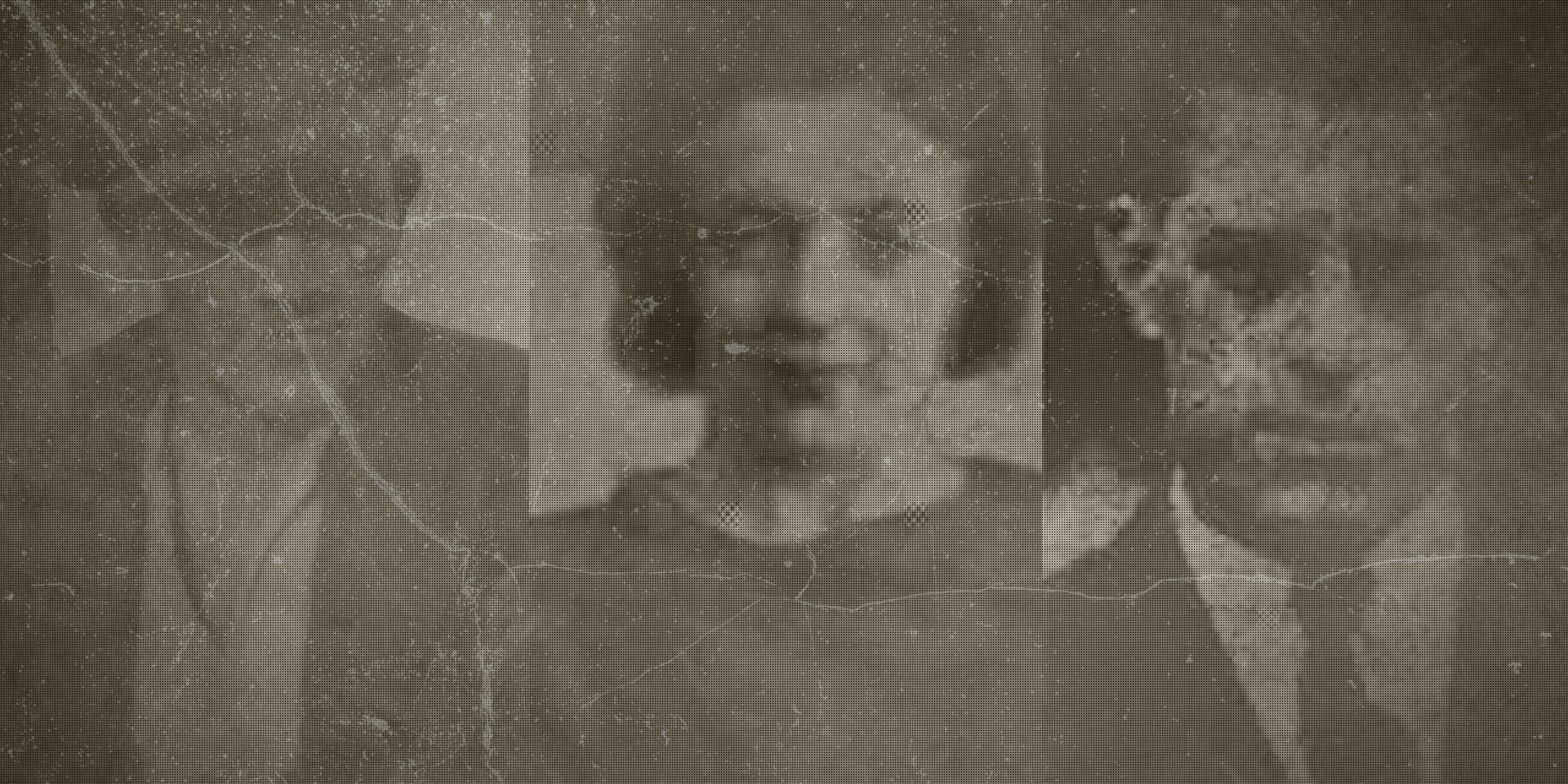
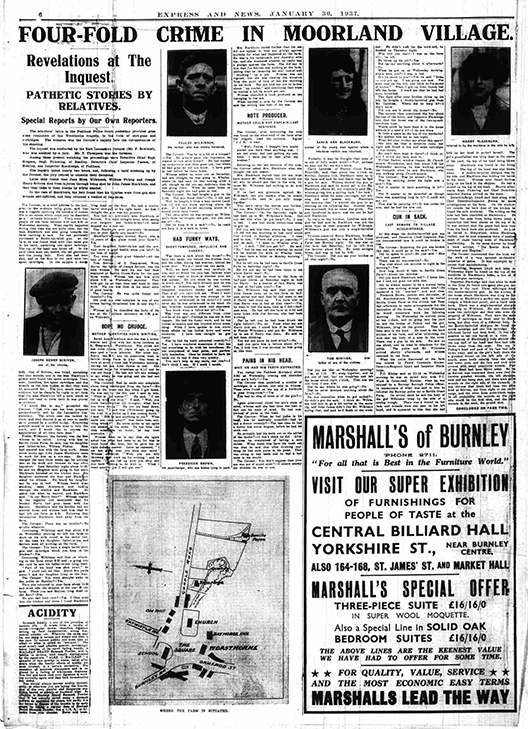
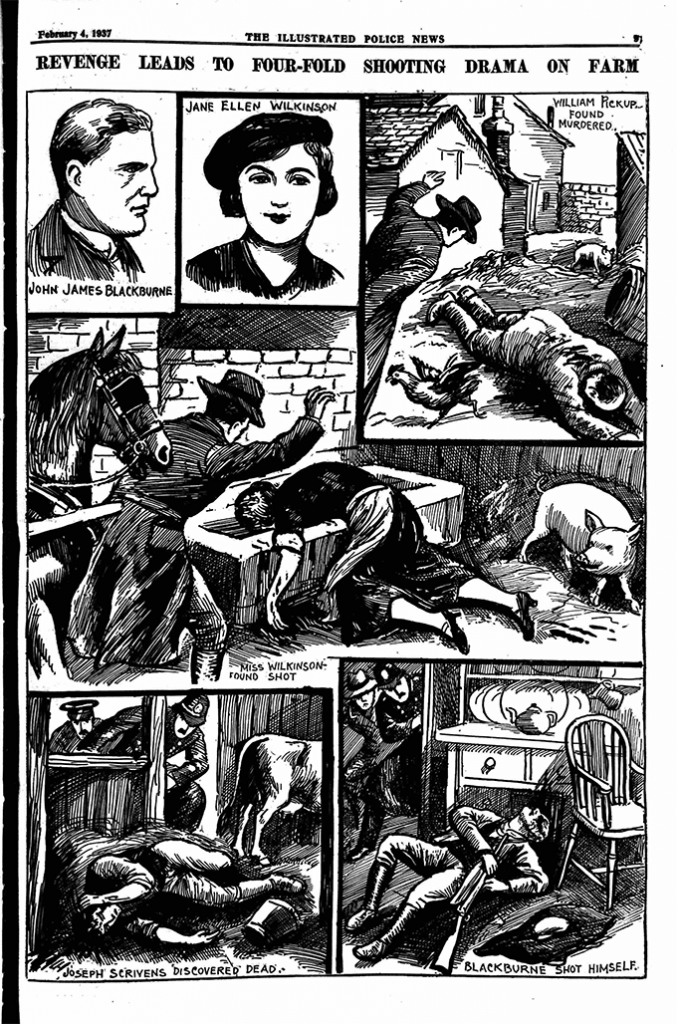
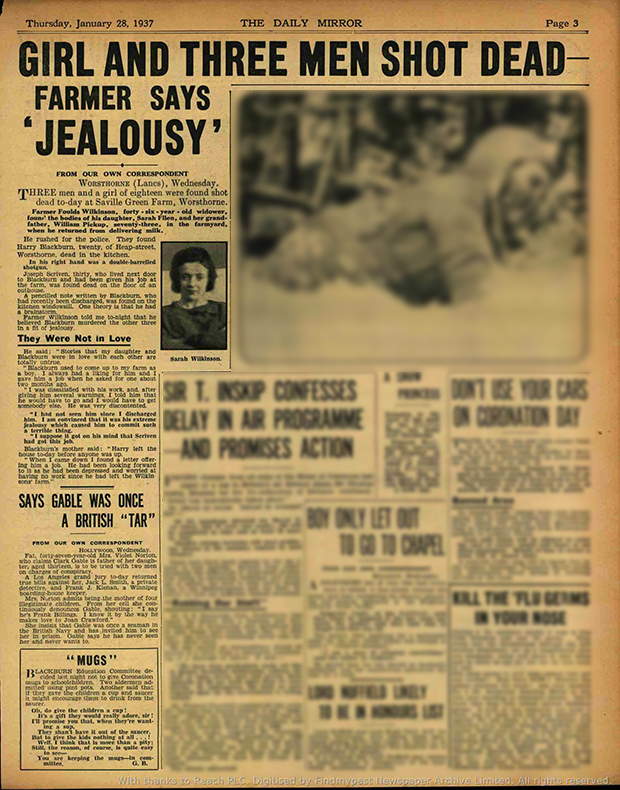
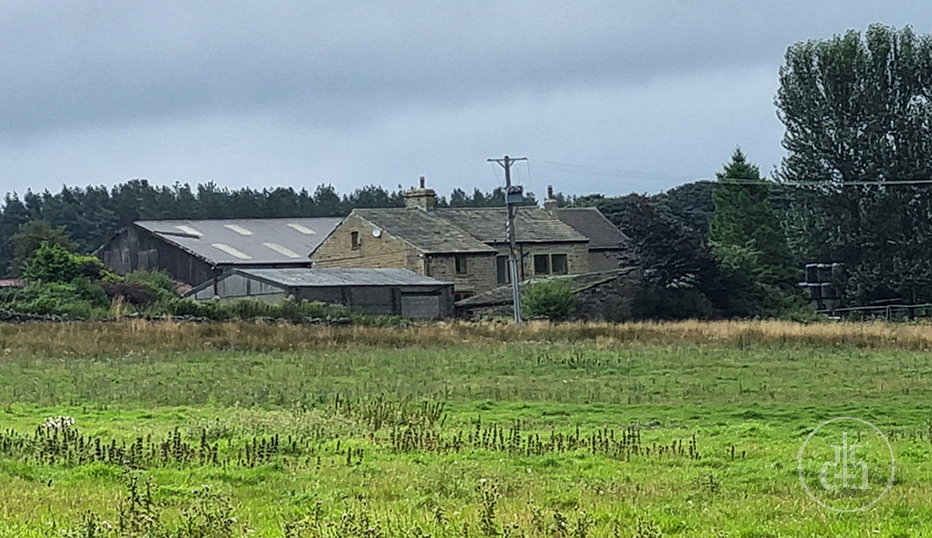
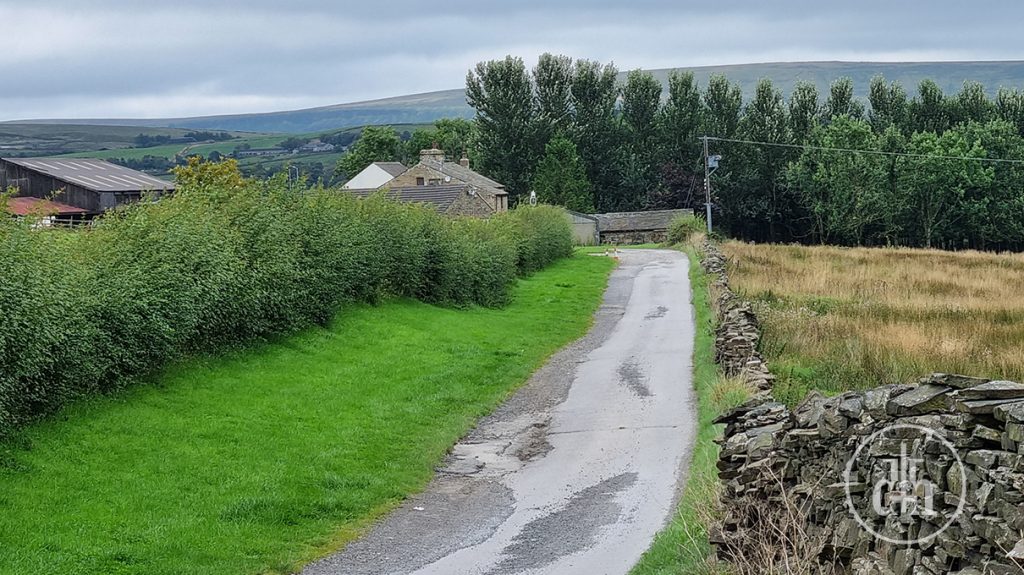
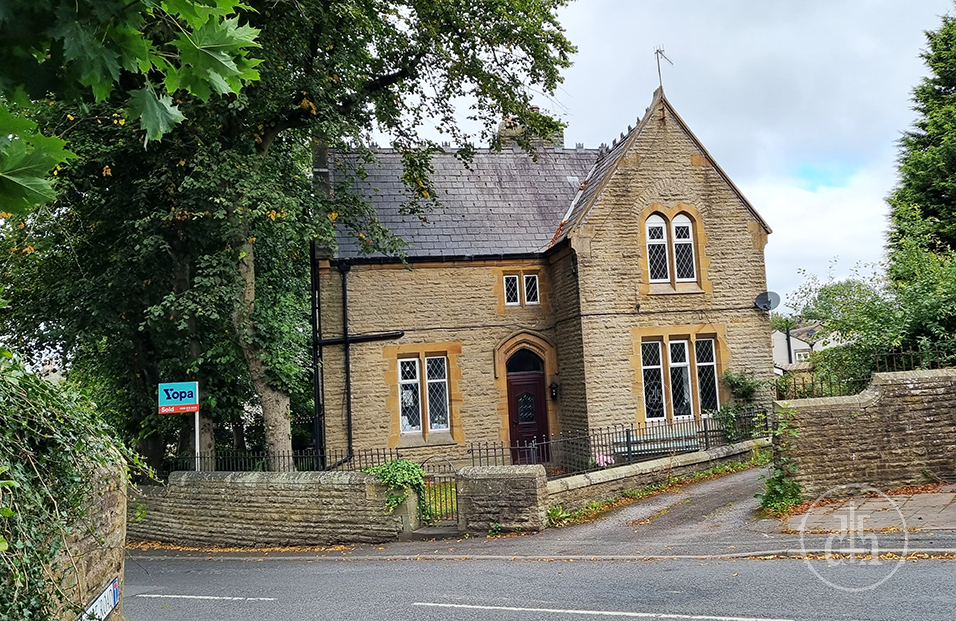
Leave a Reply to Chris Cancel reply